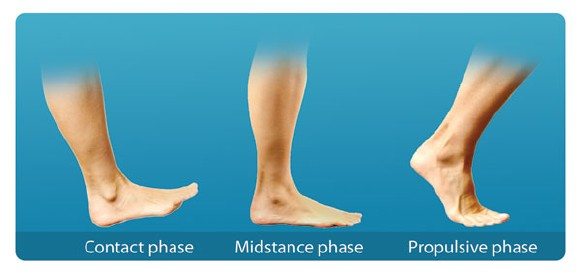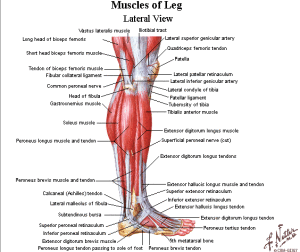Flip Flops: A Good Shoe to Wear?
Um…no. Flip flops are a “flop” when it comes to being supportive and biomechanically sound. However, I will still bust out my flip flops in the summer…to walk short distances. Seriously, flip flops should not be an everyday shoe in the warm weather. I know, I know. They are cute, make a fun sound when we walk, convenient and super affordable. And, as the weather is warming up, I’m starting to hear the annual question: “It’s ok to wear flip flops, right?” I wish it was.
Flip flops change our gait pattern. It’s a simple as that. The “shoe” (I use that term loosely) contributes to poor foot intrinsic and ankle stability, making flip flop wearers more susceptible to injury.
How does the flip flop change the gait pattern?
Normal Gait – A Very Simplified Look at the Foot and Ankle
When our foot hits the ground, the heel contacts first. After the heel makes contact, the foot pronates or “softens” to feel the surface beneath it. Then, the foot supinates or becomes rigid in order for the foot to propel the body through space.
 While our foot is striking the ground, the ankle stabilizers control or decelerate the motion to allow for a smooth landing. The posterior tibialis (medial stabilizer) and peroneus longus and brevis (lateral stabilizers) act to keep the ankle from rolling too far in or too far out. When the foot becomes a rigid lever, the plantar flexors (gastrocnemius and soleus) push the heel off the ground so the body can propel through space.
While our foot is striking the ground, the ankle stabilizers control or decelerate the motion to allow for a smooth landing. The posterior tibialis (medial stabilizer) and peroneus longus and brevis (lateral stabilizers) act to keep the ankle from rolling too far in or too far out. When the foot becomes a rigid lever, the plantar flexors (gastrocnemius and soleus) push the heel off the ground so the body can propel through space.
This is very simplified, but it gives you can idea that the changing foot position requires the ankle stabilizers to activate.
Note: During the gait cycle, toe flexion is not a normal biomechanic event.
Compensated Gait with A Flip Flop
What is keeping the shoe on the foot? Your toes. Think of the little toe squeezer between the 1st and 2nd toe. The ONLY way the flip flop stays on the foot is by curling our toes around the squeezer. This toe curling kicks off our foot intrinsics (core of the foot) and ankle stabilizers. So, that’s why more ankle sprains and stubbed toes happen in these floppy shoes.
Blog Activity: Let’s Simulate Walking with A Flip Flop
First, take a few steps (with your shoes off) and watch how your foot and ankle move. Notice the ease of motion and natural muscle activation of the foot and ankle. The toes spread, the arch relaxes and then you push-off from your calf.
Now, let’s simulate what it is like for your foot to be in a flip flop. Curl your toes and try to walk. Tricky, right? And, fairly uncomfortable. Although this is an extreme version, this toe curling is exactly was is happening in these popular summer shoes.
Take Home Point
So, what are your options for the summer? Buy a sandal with a back on it (strap around the heel). This is 1000 times better than a flip flop. The back strap allows the foot to feel supported, eliminates toe curling and normal gait mechanics can commence.
© 2015 and Beyond! ALL BLOG CONTENT at duncansportspt.com by Lori Duncan PT
ABOUT THE AUTHOR
 Lori Duncan, DPT, MTC, CPT is a respected Physical Therapist, Manual Therapist and Pilates instructor in Lafayette, CO. Lori is passionate about preventive physical therapy and education and is a nationally recognized presenter. She can be reached at [email protected]. You can also follow Duncan Sports Therapy + Wellness on Facebook & Instagram for more free tips and information.
Lori Duncan, DPT, MTC, CPT is a respected Physical Therapist, Manual Therapist and Pilates instructor in Lafayette, CO. Lori is passionate about preventive physical therapy and education and is a nationally recognized presenter. She can be reached at [email protected]. You can also follow Duncan Sports Therapy + Wellness on Facebook & Instagram for more free tips and information.


Hi
Do you think flip flops can contribute to plantar fasciitis??
regards
Stuart
Hi Stuart,
Yes, absolutely. Flip flops don’t allow our foot mechanics to work well, so we brace our toes and that can lead to a very sore plantar fascia for some.